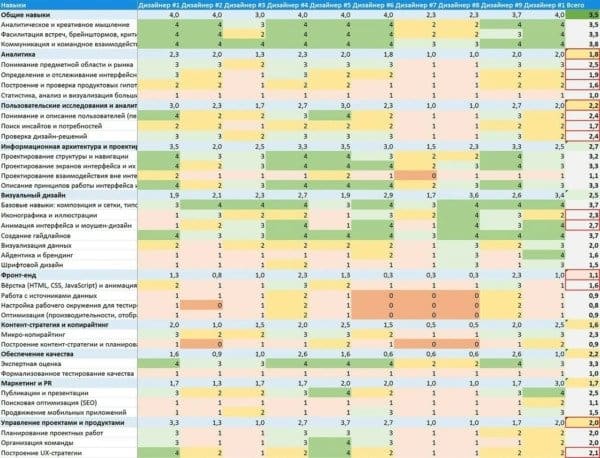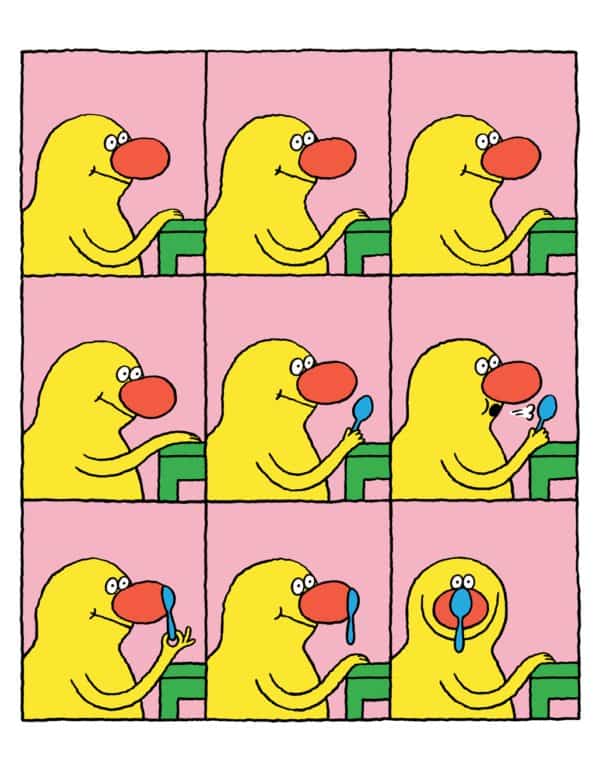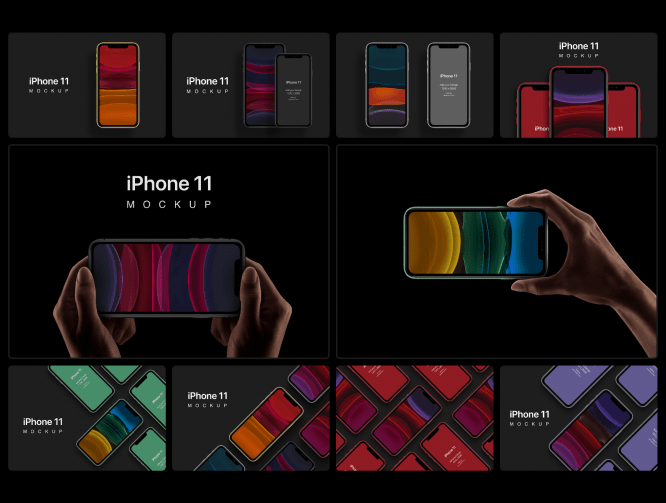Self-development of a designer: 11 ways
Self-development of a designer: 11 ways
Design is a lively and ever-evolving field. Trends, needs change, new technologies and frameworks appear. Who does not go forward – he slowly moves back.
Just having received an education, you are just entering the first stage, after which there is a long way of mastering the profession and honing your skills.
How to set up your ecosystem so that the development process is conscious and leads you to your goal?
I will share here in the ways that I myself use or find potentially useful.
1. Skill Map
I learned about the skill card from Igor Mustaev. This is a table with a list of possible hard and soft skills of a designer that can be assessed. By filling out the table it will be clear what your strengths and weaknesses are. Depending on your goals, it will be clear which skills you need to improve first.

You can choose from four to seven points that you consider necessary to develop. These can be strategically important skills for advancement, or just those to which the soul lies.
The skill becomes one of the goals for the year, clear steps are prescribed for its development: passing the course / reading the list of books / passing a certain amount of practice.
/
After six months, you can return to the table and compare the results.
The picture below shows Yura Vetrov’s table, which can also be used to assess the skills of an entire design team. Skills are listed mostly for a product designer, but can be adjusted to suit your specialization. You can read more about this system here.

Download the table
In my opinion, when choosing a direction for development, it is worth focusing on your strengths, strengthening them in the first place. And tighten the rest of the skills in an optional mode to an acceptable level. So, it is better to be highly developed in 1-3 skills than moderately developed in everything.
2. Stay curious
One day at a design thinking conference, I met legendary British designer Michael Wolfe and asked me for one single most important piece of advice. To which he replied to me that you should always remain curious.

Look around and ask questions: why is it done this way? Does it work well? How do people feel using these things? How can this be improved?
/
Such awareness and attentiveness leads to new knowledge and thoughts, the approach is universal for any age and profession.
3. Configure info-flow
If you have already understood in which direction you want to develop, it is worth setting up an information flow on this topic. It is convenient for me when everything is in one place, I use the feedly service, in which I watch the latest news from my favorite media.

It’s important to take the time to keep track of the news and make it a habit. For example, every day in the morning, 15 minutes, or once a week, spend an hour watching content.
/
4. Write texts / give lectures
Once you have set up the content on the desired topic and the process has started, it is useful to recycle the material into articles / notes / lectures. For this, fb / telegram-channel / medium / instagram / other platforms are suitable.
It structures the information in your head, benefits others, and makes the whole process even more fun. In addition, you can thus gather like-minded people around you.
In our studio, we wrote weekly digests with interesting links and short comments to them. A couple more times I gave internal lectures for the studio, making a mini-presentation with useful stories about what I had learned.
5. Learn from people
First, take a look around and look at your team. These are people with different experiences, each has its own super-power and can teach something. If these are not designers, it is also interesting. The experience of a manager / sales manager / programmer can be just as helpful.
Do not hesitate to ask questions and ask for more details about their knowledge, while they are in close contact with you and you see each other often. Make the most of this time.
The most common mistake is to think that you will be working together for a long time and ask them later.
…
More than once I fell into this trap! Be keenly interested, they will be pleased. In order not to distract them during working hours, you can find out when it is convenient for them to set aside 15 minutes and talk, perhaps over a cup of coffee with a croissant before work or at lunch. It is also helpful to simply observe their work and approach, to notice what works and why.
If you know prominent designers in the industry and want to learn something from them – do not hesitate, write to them or ask a question. It only seems that they are cold and inaccessible, in fact, they can answer you with pleasure and may even agree to have a cup of coffee.
If they do not answer you will not lose anything. If you are not familiar, run to conferences, lectures, courses. The main thing is to overcome the introvert in yourself and just say “Hello!” …
6. Apply empathy
Almost any design project is created for the user. Everyone knows this, but often designers do not really understand for whom they are creating a product.
Because the designer sits in the office, reads about the audience, imagines this fantasy image made up of stereotypes in his head and the result of the work remains superficial.
The work and your perspective will go much deeper if you can find real people and try to find out their values, needs and pain points. Feel yourself in their place.

Several of the methods:
- Talk with the audience, to understand what worries them, what makes them happy, what their daily routine looks like. Why do they love this or that product, for what properties. It is helpful to talk to extreme users. For example, with the biggest fan of the product and with its clear opponent. They will give the brightest results.
- Watch from the outside behind the people. Sometimes you can see more with your eyes than you can hear with words. If possible, spend time with the person representing the audience, follow him without interfering, but fixing everything.
- Read the forums. This is a real treasure of insights, on forums and youtube channels, people speak frankly about what worries them. It will immerse you in the world of the people you are designing for.
7. Try new things
Finding ways to do something new in every project without going the beaten path. Apply new technologies and approaches, colors, systems, compositions, meanings, grids.
Walking new paths home, learning Chinese, rearranging furniture, being a camp counselor. All these novelties do not let you get bored, they give you the drive to experiment and work.
…
8. Analyze experience in related fields
I heard this advice in a conversation with bang bang with Svyat Vishnyakov. There are overlaps with design in creative fields, but also a lot of different things, as directions can have different challenges, stories, technologies and opportunities. Unexpected ideas can be brought by the study of what has already been created in music, theater, art, directing. Besides, it’s so interesting! Maybe one of the directions will become your hobby.
9. Personal projects
By personal projects, I mean creative research-statements on your initiative that you may not be paid for.

Personal projects are needed because it is an opportunity to explore new territories without restrictions, to express yourself. This is pure creativity, a dialogue with the world. The results of these searches are sure to leave a mark on your commercial work as well. Moreover, this is already a way not to burn out at work, to be distracted from the routine, to find the compass of your inner fire.
If you don’t know what topic to make a project on, you can look around and find a problem that needs to be solved.
…
These can be small or big reasons to make the world a better place. For example, come up with a way for people to communicate more at the table, and not look at the phone or hand over batteries for recycling, clean up poop after dogs, encourage neighbors to greet at the entrance.
Maybe it will be a playful project, but which will make you think about changes again.
You can also participate in contests and free projects, but which are very interesting to you. For example, invite your favorite animal care center or bakery to make a project for symbolic money.
10. Don’t be afraid to make a mistake.
A very important psychological feature of many is the avoidance of mistakes. It’s so scary that someone will look unkindly or condemn, I’d rather act like everyone else and keep my head down.

11. Apply the information received in practice
When you read articles or listen to lectures, you are happy and inspiredly write out the most useful tips for yourself in a notebook, so they are stored there for years, and nothing changes in habits 🙂 It’s better to start with a small, but action, right now.
To trick the brain, you can promise it to occupy itself only for 5 minutes.
,
This is not much at all. And you will most likely persuade yourself, but the secret is that after 5 minutes, most likely you will already be involved and it will be easier to continue.
Source: vc.ru
…


